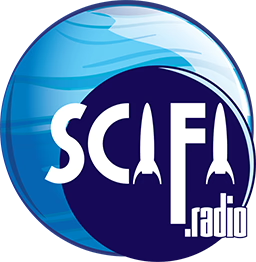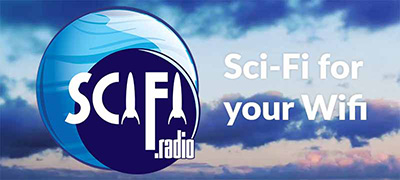Key Takeaways
- Rubin Observatory will produce approximately 20 terabytes of data each night, imaging the entire southern sky every three to four days.
- The observatory features an 8.4-meter Simonyi Survey Telescope and a 3,200-megapixel LSST Camera, requiring 400 4K screens to display a full image.
- The project aims to create the largest time-lapse of the cosmos ever attempted over a ten-year mission.
- Rubin Observatory is expected to generate approximately one exabyte of processed data, comparable to all the books in human history.
- The data processing will occur at SLAC National Accelerator Laboratory, with alerts generated for significant changes detected in the sky.
Trifid and Lagoon nebulae Credit: NSF-DOE Vera C. Rubin Observatory
The Rubin Observatory is a new generation of telescopes with a wider view of our Universe. The first light images are spectacular!
Each full image snapped by the observatory’s 8.4-meter Simonyi Survey Telescope and 3,200-megapixel LSST Camera would require 400 4K high-definition television screens to display at its original size, according to the observatory. The Rubin Observatory will produce on the order of 20 terabytes of data each night as it images the entire southern sky every three to four days during the Legacy Survey of Space and Time (LSST).
The new observatory will create the ultimate cosmic movie using an innovative telescope design, novel data infrastructure, and the largest camera ever built. Here are the first images.

In order to produce the largest time-lapse of the cosmos ever attempted, a number of technology innovations had to be developed for Rubin Observatory. Some components of Rubin are entirely new innovations, while others build on existing technologies in new ways. The result will be a massive continuous stream of data imaging the entire sky for 10 years.

This system will allow astronomers to track galactic motion on a cosmic scale, plus give us billions of serendipitous discoveries
The observatory is expected to generate approximately one exabyte (1000 petabytes) of processed data! This is approximately as much information as is stored in all the books in all the languages in human history.
The project is so enormous they had to design a special portal to access the data! It’s a real challenge in data science, to construct Data Structures and interfaces that humans can use to access this Cosmic deluge of data. Astronomers from around the world are taking courses in how to use the new system, including Alerts. These are complex filters that allow researchers who are looking at specific categories of observations to get an alert when there’s new relevant data uploaded.



Rubin will scan the entire sky every 3 nights, millions of objects an hour, so every 3 days a scientist will get an update on any changes in the patch of sky they’re studying.


The 28 foot main telescope mirror is among the largest in the world, and it has a unique fast-slewing motor that allows the two-hundred-ton mount to rotate in 5 seconds. Moving faster than a human can run, it quickly gathers light data that’s sent to a pipeline for processing.

Rubin Observatory generates so much astronomical data that it requires a complex system to transport the data off the summit of Cerro Pachón and process them into information astronomers and astrophysicists can use to do science. The camera in Rubin Observatory takes an image, and the image data travels down the mountain to the town of La Serena on high-speed, fiber-optic cables that were installed specifically for Rubin.From there, thanks to partnerships with public (Chile has a robust research and education network since 1962), and private utility companies, the data continue to the United States, eventually reaching SLAC National Accelerator Laboratory in California. SLAC has the infrastructure to quickly do the initial supercomputer processing of Rubin Observatory data, which includes comparing new images to older images to identify the changes that have occurred from night to night, and even hour to hour. The data processing software at SLAC generates an alert every time a change is detected, and changes happen more frequently than you might expect—about 10 million times every night!
The project is funded by the National Science foundation. Their funding could be slashed in the latest congress.
The video below includes a time lapse of an asteroid swarm, making them easy to track for planetary defense.
This is only a taste of what’s to come, the first all-sky deep-field time-lapse will be astounding!

Vera Rubin was a pioneering astronomer who discovered proof that Dark Matter is real. The telescope named for her will, among many missions, help us know what it’s made of.
![]()
David Raiklen wrote, directed and scored his first film at age 9. He began studying keyboard and composing at age 5. He attended, then taught at UCLA, USC and CalArts. Among his teachers are John Williams and Mel Powel.
He has worked for Fox, Disney and Sprint. David has received numerous awards for his work, including the 2004 American Music Center Award. Dr. Raiklen has composed music and sound design for theater (Death and the Maiden), dance (Russian Ballet), television (Sing Me a Story), cell phone (Spacey Movie), museums (Museum of Tolerance), concert (Violin Sonata ), and film (Appalachian Trail).
His compositions have been performed at the Hollywood Bowl and the first Disney Hall. David Raiken is also host of a successful radio program, Classical Fan Club.













“Rubin Observatory will produce approximately 20 terabytes of data each night….”
It’s amazing how technology keeps going. I remember back in the 20th century talking to someone who ran a computer store about gigabytes. He said, “gigabytes?” A huge computer that could hold a single gigabyte was borderline science fiction.
But nowadays….